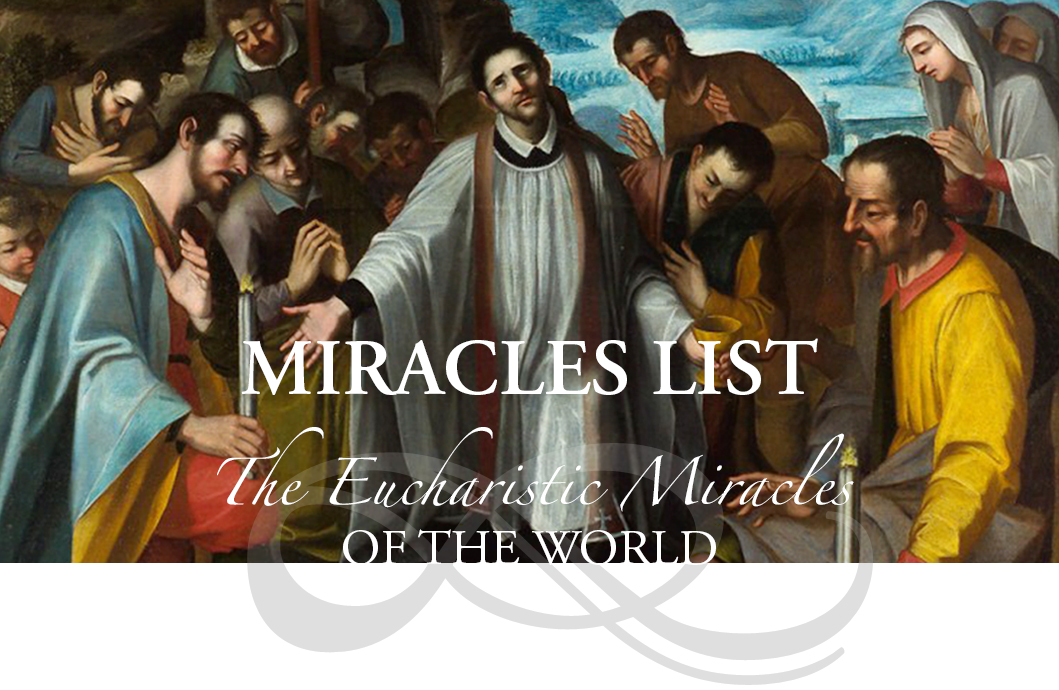
AN INTERNATIONAL EXHIBITION DESIGNED AND CREATED BY CARLO ACUTIS
The Eucharistic Miracles
Eucharistic miracles are God's extraordinary interventions, which are meant to confirm the faith in the presence of the body and blood of the Lord in the Eucharist. We know the Catholic teaching on the real presence. With the words of consecration: "This is my body," "This is my blood," the substance of bread becomes the body of Christ and the substance of wine His blood. This marvelous change is called transubstantiation, that is to say, the passage of substance. There remain only the appearance or species of the bread and wine, which, using a philosophical term, are called accidents. In other words, only the dimensions, color, taste, smell and even the nutritive capacity remain. But the substance, or the true reality, does not remain, for it has become the body and blood of the Lord.
Transubstantiation cannot be experienced by the senses; only faith assures us of this marvelous change.
The Eucharistic miracles confirm this faith, which is based on Jesus's words according to which what which seems to be like bread is no longer bread, and what seems to be wine is no longer wine. In the Eucharistic miracles the flesh and blood, or one or the other, appear, depending on the situation. These miracles show that we must not look at external appearances (bread and wine) but at the substance, or the true reality of the thing, which is flesh and blood.
Medieval theologians carefully examined the issue of Eucharistic Miracles (which were frequent in their day) and have given various interpretations; but the best founded and most reasonable seems to be that of St. Thomas Aquinas, the “Eucharistic Doctor” par excellence (Summa Theolgica III, q. 76, a. 8).
He said that the body and blood which appear after a miracle are due to the transformation of the Eucharistic species, namely, of the accidents, and do not touch the true substance of the body and blood of Christ. In other words, the species of bread and wine are miraculously changed into the species of flesh and blood; but not the true body and true blood of Jesus but those which, even before the miracle, were hidden beneath the species of flesh and blood.
If the flesh and blood were truly the flesh and blood of Christ, we would have to say that the risen Jesus, who reigns impassibly at the right hand of the Father, loses a part of his flesh and blood, something which cannot be accepted.
We must say that the flesh and blood which appear in the miracles are species or appearances, neither more nor less than the species of bread and wine.
The Lord performs these miracles to give us a sign, easy and visible to all, that in the Eucharist there is the true body and true blood of the Lord.
But this true body and this true blood are not those that appear, but rather those that are substantially contained under the species or appearances, species and appearances that, before the miracle, were those of bread and wine, and after the miracle are those of flesh and blood.
Under the appearances of flesh and blood Jesus is truly and substantially contained as he was before the miracle. For this reason we can adore Jesus truly present under the species of flesh and blood.
Father Roberto Coggi, O.P.